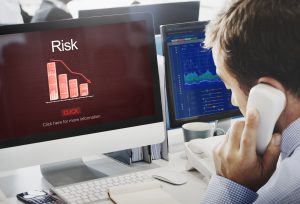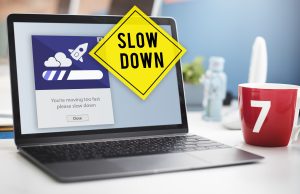Soft-landing vs slowdown risks 2025

Soft-landing vs slowdown risks? This is a question that dominates economic discussions in 2025. For policymakers, businesses, and investors, the outcome could shape financial stability and global markets.
While a soft landing signals resilience, a slowdown raises concerns about fragility and long-term uncertainty. Understanding the difference helps us anticipate how these forces affect daily life and long-term growth.
Understanding Soft-landing Economics
To fully understand soft-landing economics, it is important to see it as more than a technical term. It represents a situation in which growth slows in a controlled way, allowing inflation to fall and the labor market to remain stable.
Rather than a collapse, this is an intentional deceleration, often seen as proof of a resilient economy. The balance is delicate, but when it works, it allows households and businesses to adapt without the severe costs of recession.
In 2025, many economists point out that inflation in the United States has eased significantly compared to recent highs, while job creation has stayed strong.
This combination suggests the conditions of a soft landing, where demand cools enough to reduce price pressures but activity continues.
Yet, the ongoing debate around Soft-landing vs slowdown risks shows that even in this favorable scenario, vulnerabilities remain if external shocks or weak consumption take hold.
Key Indicators of a Soft Landing
- Declining inflation rates signal that monetary tightening is working. Lower prices restore purchasing power for households.
- Stable employment levels show resilience in the labor market, ensuring income stability and confidence.
- Moderate GDP growth indicates that the economy is expanding, even if at a slower pace, which is healthier than unsustainable booms.
- Steady consumer spending reflects confidence, preventing downturn spirals and reinforcing the foundation of growth.
The Role of Monetary Policy in Soft-landing vs slowdown risks
Central banks are the key players in determining whether the economy achieves a soft landing or slips into slowdown. By adjusting interest rates, they influence borrowing, investment, and spending patterns.
When rates are increased gradually to tame inflation without choking growth, the probability of a soft landing improves.
But the risk of policy miscalculation remains, tightening too much could weaken demand, while loosening too quickly could reignite inflation.
The broader lesson is that soft-landing economics demonstrates the importance of timing, adaptability, and measured decision-making.
The current global context reinforces that the fine line between stability and slowdown makes the debate on Soft-landing vs slowdown risks more relevant than ever.
Identifying Signs of a Slowdown
Recognizing the early signs of an economic slowdown is critical to understanding the debate on Soft-landing vs slowdown risks.
While a soft landing reflects resilience, a slowdown points to vulnerabilities that could drag growth into a more difficult phase.
Distinguishing between the two requires not only tracking traditional indicators but also interpreting their long-term implications.
Recent analysis shows that although inflation has eased, some risks remain beneath the surface. Consumer demand, for instance, is showing signs of fatigue in certain sectors, and global trade disruptions add pressure to manufacturing output.
Economists emphasize that identifying these shifts early allows businesses and households to prepare, making the difference between managing a controlled slowdown and facing a deeper contraction.
Common Indicators of Economic Slowdown
- Declining consumer spending: A sustained drop in household expenditures suggests weaker confidence, which can ripple into reduced business revenues and hiring.
- Rising unemployment rates: When companies slow hiring or begin layoffs, it directly impacts household income and consumption, creating a feedback loop of reduced growth.
- Decreased manufacturing output: A slowdown in industrial production reflects softer demand and signals that broader economic activity may be losing momentum.
- Slower housing market growth: Weakness in property sales and construction often indicates shrinking household wealth and lower investment appetite.
These indicators often appear together, painting a clearer picture of the economy’s trajectory. If they worsen simultaneously, the Soft-landing vs slowdown risks tilt toward the latter.
The Importance of Tracking Economic Data
Monitoring real-time data is essential for distinguishing temporary dips from systemic weakness. Reports on GDP growth, inflation, and employment trends provide the foundation for accurate forecasts.
Equally important is consumer and investor sentiment, as uncertainty itself can accelerate a slowdown by discouraging spending and investment.
In today’s context, economists warn that even modest shifts in data can tip the balance between stability and contraction.
That is why identifying the signs of a slowdown early is not only an analytical exercise but also a necessary tool for navigating the Soft-landing vs slowdown risks that define the current global economy.
Factors Influencing Soft-landing and Slowdown

The outcome of Soft-landing vs slowdown risks depends on a complex interaction of domestic and global forces.
Understanding these influences helps explain why some economies manage a stable transition, while others slip into prolonged weakness.
Both internal economic dynamics and external shocks act as decisive elements in shaping the trajectory of growth.
Internal Economic Factors
Domestic fundamentals often serve as the first line of defense against volatility. When these factors remain strong, the likelihood of a soft landing increases.
- Consumer confidence: Stable sentiment encourages household spending, which is essential for sustaining growth even during monetary tightening. If confidence falls, demand quickly contracts, amplifying slowdown risks.
- Business investment: High levels of corporate investment in infrastructure, technology, or expansion signal optimism and support job creation. Weak investment, however, suggests caution and can accelerate economic cooling.
- Employment strength: Strong labor markets provide households with income stability, cushioning the impact of slower growth. Rising unemployment, on the other hand, shifts the balance toward slowdown.
- Inflation control: Moderating inflation reflects effective policy management, but if price pressures persist, they erode purchasing power and raise the probability of contraction.
Russell Investments highlights that in 2025, the U.S. economy is benefiting from stable employment and moderating inflation, which are hallmarks of a potential soft landing.
Still, underlying vulnerabilities such as slowing consumer activity could tilt the balance toward slowdown.
External Influences
Global forces often determine whether Soft-landing vs slowdown risks remain manageable or escalate. International trade, financial flows, and geopolitical tensions can either reinforce stability or magnify fragility.
- Trade relationships: Declining demand from major partners weakens exports, affecting domestic industries reliant on foreign markets.
- Geopolitical dynamics: Conflicts or policy shifts in major economies can disrupt supply chains, energy markets, and investment patterns.
- Global financial conditions: A shift in global liquidity, such as rising interest rates in major economies, can pressure emerging markets and reduce capital availability.
- Unexpected shocks: Natural disasters or energy crises create sudden disruptions that test the resilience of even strong economies.
Yieldstreet emphasizes that soft landings are rare precisely because external events often collide with domestic vulnerabilities, making the balancing act difficult.
This underscores why economists warn that even in seemingly stable conditions, the interplay of these internal and external forces ultimately determines the path forward.
In short, the battle between soft-landing vs slowdown risks is decided by the strength of internal fundamentals and the ability to withstand external pressures.
Policymakers, businesses, and investors must weigh both sides to anticipate outcomes with greater accuracy.
The Role of Government Policies in Soft-landing vs slowdown risks
Government policies play a decisive role in determining whether economies experience a soft landing or slide into a slowdown. Fiscal and regulatory decisions can create stability or, if mismanaged, worsen vulnerabilities.
In the ongoing debate on Soft-landing vs slowdown risks, these policies act as one of the strongest levers for shaping long-term outcomes.
Fiscal policy, particularly taxation and public spending, directly influences household behavior and business investment. When taxes are lowered, disposable income rises, boosting consumption and investor confidence.
On the other hand, tax hikes can restrain growth and weaken demand. Targeted tax credits for companies often encourage capital investment, reinforcing employment and innovation, both crucial to supporting a soft landing.
If these measures are mistimed, however, they can tip the economy toward slowdown, demonstrating how central the fiscal toolkit is in managing Soft-landing vs slowdown risks.
Government Spending and Regulation
Public spending is another vital instrument in steering economic stability. During periods of weaker growth, governments that invest in infrastructure, education, or healthcare inject demand directly into the economy.
These measures create jobs, enhance productivity, and reinforce consumer confidence, all of which increase the likelihood of a soft landing. Yet, excessive spending risks fueling inflation, shifting the balance toward slowdown.
Regulation also plays a critical role. Strong oversight of the financial sector, for instance, prevents systemic risks that could trigger downturns. However, overly strict rules may restrict growth and innovation.
Striking this balance is essential to avoid intensifying the Soft-landing vs slowdown risks.
Russell Investments stresses that in 2025, U.S. policymakers must walk a fine line: supporting growth through strategic stimulus while ensuring inflation does not rebound.
Ultimately, government policies shape the very conditions under which soft-landing vs slowdown risks unfold.
From stimulus packages to regulatory frameworks, each decision can influence inflation, employment, and consumer sentiment for years to come.
Effective policy coordination not only stabilizes economies but also increases the chances of achieving a true soft landing rather than succumbing to slowdown pressures.
Real-world examples of soft-landing
Real-world examples of soft-landing are important to understand how economies can adjust smoothly to slowdowns. Observing these instances helps us learn valuable lessons about economic resilience.
One of the most notable examples is the United States after the tech bubble burst in the early 2000s. The Federal Reserve implemented measures to lower interest rates, making borrowing cheaper.
As a result, the economy grew at a slower pace but avoided a severe recession, demonstrating a successful soft landing.
Post-Financial Crisis Recovery
Another significant example occurred after the 2008 financial crisis. Many economies faced severe challenges, but countries like Canada managed to navigate the situation effectively.
With strategic monetary policy and fiscal measures, Canada was able to foster growth without extreme inflation or unemployment spikes.
- Interest rate adjustments by central banks helped stimulate growth.
- Government stimulus packages played a critical role in boosting economic activity.
- Confidence in the banking system reassured consumers and investors.
These strategies allowed Canada to experience a gradual recovery while other nations struggled with more severe economic downturns.
Asia’s Economic Growth
In Asia, countries like South Korea have also shown how a soft landing can be achieved. After facing economic slowdowns in the late 1990s, South Korea focused on reforming its economic structure.
These changes helped stabilize the economy and encourage growth, avoiding recession.
By examining these real-world examples of soft-landing, we gain insights into how effective policies and consumer confidence can lead to smoother transitions during economic changes.
Future projections and implications

Looking ahead, economists remain divided on whether global markets can achieve a true soft landing or if vulnerabilities will lead to slowdown.
Projections highlight that the debate around Soft-landing vs slowdown risks will intensify in 2025 as policymakers attempt to balance falling inflation with the need to sustain employment and growth.
While current data offers cautious optimism, the path remains uncertain and highly dependent on both domestic and international conditions.
According to recent analyses, inflation has cooled significantly from the peaks of 2022, creating room for central banks to ease their restrictive policies.
At the same time, unemployment in the U.S. remains relatively low, supporting household confidence and consumption.
These factors align with the definition of a soft landing, where growth slows in a controlled manner without slipping into recession.
Yet, as Russell Investments warns, signs of fatigue in consumer spending and slower corporate investment could gradually shift the scenario toward slowdown, showing how fragile the balance of Soft-landing vs slowdown risks truly is.
Key Implications for the Coming Year
- Employment trends: If job creation continues, it will reinforce the possibility of a soft landing. However, layoffs or stagnant hiring could tip the balance toward slowdown.
- Inflation and interest rates: Controlled inflation allows central banks to pause or lower rates, stimulating growth. Rising price pressures, however, may force new hikes, weakening momentum.
- Global uncertainties: Trade disruptions, geopolitical tensions, or unexpected shocks could amplify risks and undermine progress toward stability.
Yieldstreet emphasizes that soft landings are historically rare because multiple variables must align perfectly. Even when conditions appear favorable, small policy errors or external disruptions can shift the economy toward contraction.
This means businesses and investors must stay vigilant, preparing strategies that can adapt quickly to either scenario.
In summary, the outlook for 2025 suggests a cautious but possible soft landing. Still, the ongoing Soft-landing vs slowdown risks debate reflects how sensitive the economy is to shifts in policy, global trade, and consumer behavior.
Understanding these projections helps policymakers, companies, and households prepare for both resilience and potential turbulence.
Conclusion: Navigating the Uncertainty
The discussion around Soft-landing vs slowdown risks reflects one of the most pressing dilemmas in today’s economic environment.
The direction the economy takes will influence household budgets, investment strategies, and government policy decisions worldwide.
While a soft landing offers a chance for gradual adjustments and continued stability, the threat of a slowdown highlights the fragility of global interdependence.
For policymakers, the task is ensuring that monetary and fiscal strategies remain aligned.
Central banks must carefully balance rate adjustments, while governments need to design targeted spending that encourages confidence without overstimulating demand.
Businesses and individuals, in turn, must remain vigilant, adapting their strategies to protect themselves from volatility while staying open to opportunities that arise during transitional phases.
Historical patterns show that soft landings, while rare, are not impossible. As explained in Yieldstreet’s analysis, economies that implement timely measures often manage to avoid deep recessions.
Similarly, Russell Investments’ research underlines how slowing U.S. growth in 2025 could be a pivotal test for resilience.
Together, these insights emphasize that awareness, adaptability, and policy coordination are critical to determining which side of the Soft-landing vs slowdown risks debate will prevail.
FAQ – Frequently Asked Questions about Soft-landing and Slowdown Risks
What is a soft landing in economics?
A soft landing occurs when an economy slows down gradually without entering a recession, allowing for adjustments in growth.
How can government policies influence economic outcomes?
Government policies, such as taxation and spending, can either stimulate growth or contribute to slowdowns depending on their implementation.
What are some indicators of an impending economic slowdown?
Key indicators include rising unemployment, declining consumer spending, and increased inflation rates, which can signal a need for precautionary measures.
Why are real-world examples important in understanding economic theory?
Real-world examples provide practical insights into how economies respond to challenges and can guide future decision-making and policy formulation.
Liked the article?